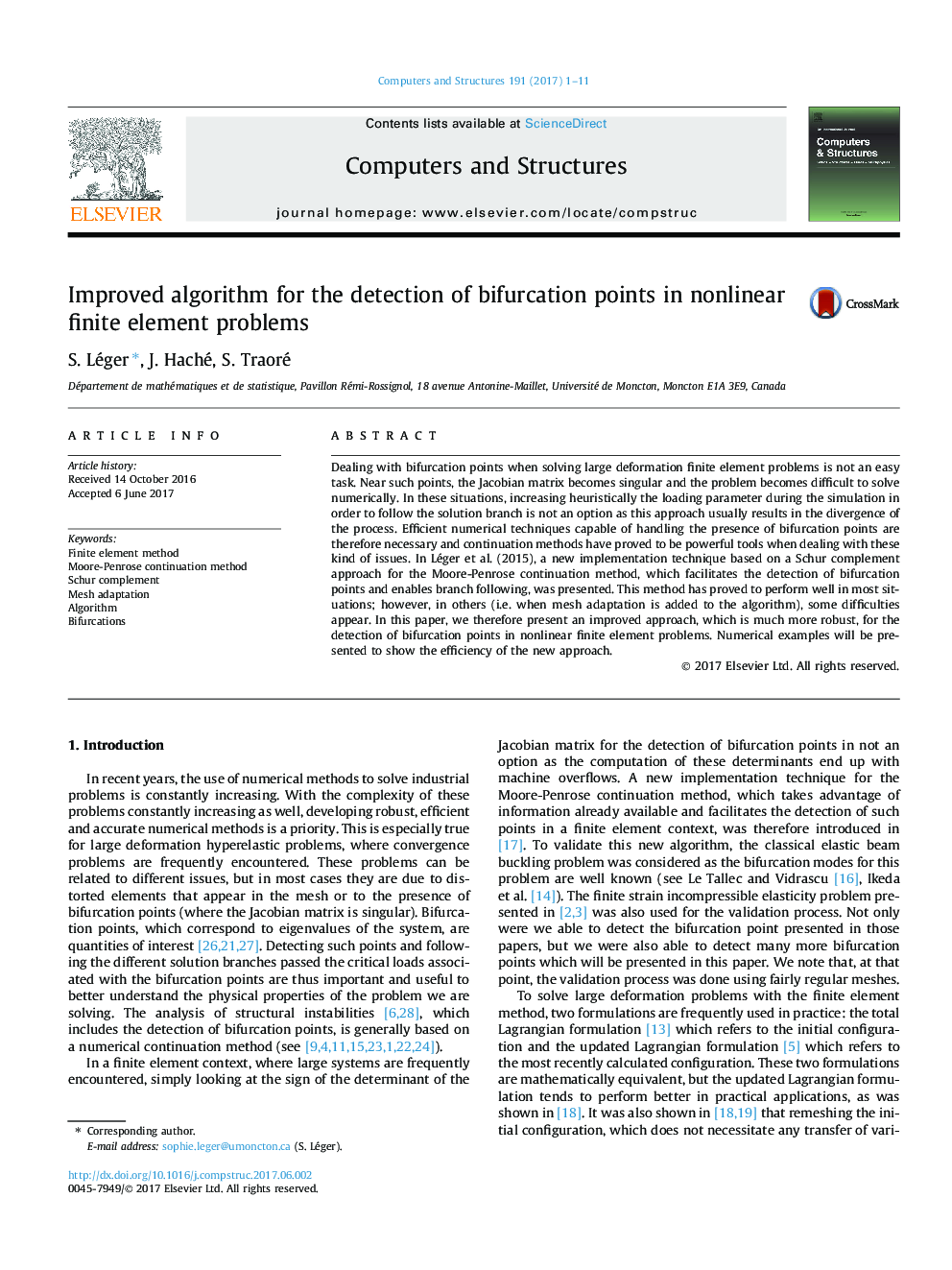| Article ID | Journal | Published Year | Pages | File Type |
|---|---|---|---|---|
| 4965639 | Computers & Structures | 2017 | 11 Pages |
Abstract
Dealing with bifurcation points when solving large deformation finite element problems is not an easy task. Near such points, the Jacobian matrix becomes singular and the problem becomes difficult to solve numerically. In these situations, increasing heuristically the loading parameter during the simulation in order to follow the solution branch is not an option as this approach usually results in the divergence of the process. Efficient numerical techniques capable of handling the presence of bifurcation points are therefore necessary and continuation methods have proved to be powerful tools when dealing with these kind of issues. In Léger et al. (2015), a new implementation technique based on a Schur complement approach for the Moore-Penrose continuation method, which facilitates the detection of bifurcation points and enables branch following, was presented. This method has proved to perform well in most situations; however, in others (i.e. when mesh adaptation is added to the algorithm), some difficulties appear. In this paper, we therefore present an improved approach, which is much more robust, for the detection of bifurcation points in nonlinear finite element problems. Numerical examples will be presented to show the efficiency of the new approach.
Related Topics
Physical Sciences and Engineering
Computer Science
Computer Science Applications
Authors
S. Léger, J. Haché, S. Traoré,
